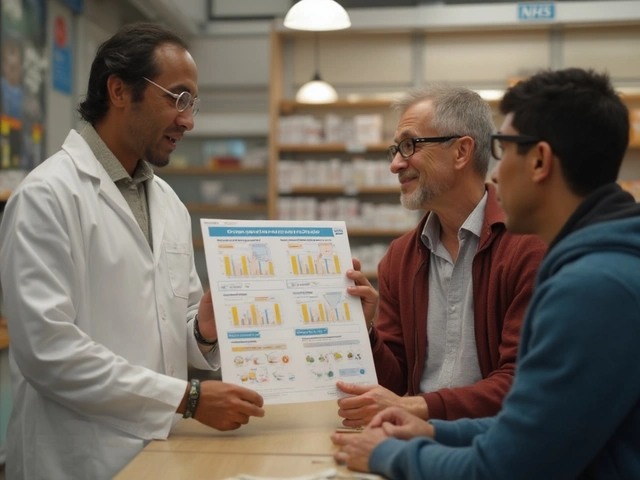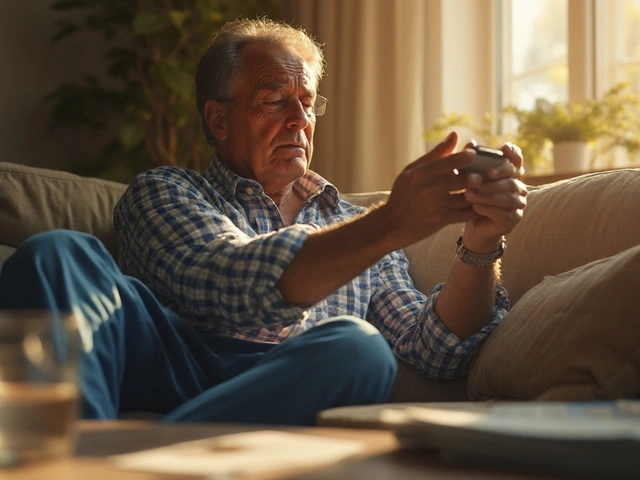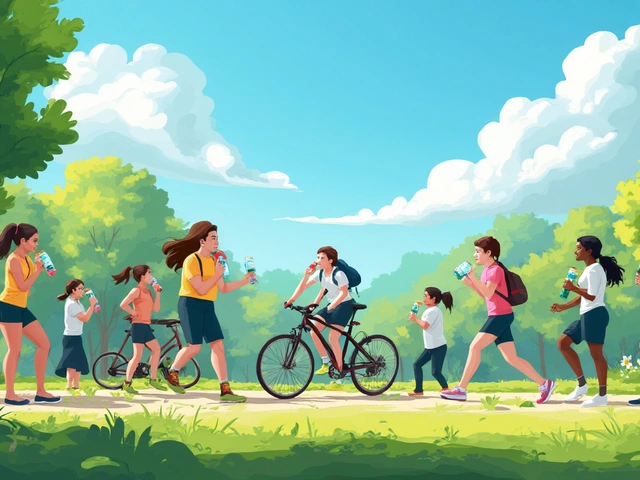Ever taken a pill and wondered if it really worked because you ate right after? Or maybe you skipped a meal to take your medicine, only to feel sick afterward? You’re not alone. Many people don’t realize that what’s on their plate can make or break how well their medication works. It’s not about being perfect-it’s about understanding the simple rules that keep your treatment effective and safe.
Why Food Changes How Medicines Work
Food doesn’t just fill your stomach-it changes how your body handles medicine. When you eat, your digestive system kicks into gear. Gastric emptying slows down by 30-50%, meaning pills sit in your stomach longer before moving to the small intestine, where most drugs get absorbed. That delay isn’t always bad, but it can be dangerous if you’re taking something that needs to hit your bloodstream fast. Fats are especially powerful here. A high-fat meal-think fried chicken, cheese, or buttered toast-can delay absorption by 1.5 to 2 hours. For drugs like acetaminophen, that means peak levels in your blood come 45 minutes after taking it on an empty stomach, but 90-120 minutes after a fatty meal. That delay might not matter for pain relief, but for antibiotics or heart meds, timing can mean the difference between healing and relapse. Some drugs actually need food to work better. Griseofulvin, an antifungal, absorbs 200-300% better with a fatty meal because bile from digestion helps dissolve it. On the flip side, tetracycline antibiotics bind to calcium in dairy products, reducing absorption by up to 75%. That’s why you can’t take doxycycline with milk, yogurt, or even calcium-fortified orange juice.Empty Stomach vs. With Food: What’s the Real Difference?
The instructions on your prescription bottle aren’t random. They’re based on real data from clinical trials. Here’s what those labels actually mean:- Take on an empty stomach: This means one hour before or two hours after eating. Your stomach needs to be clear so the drug isn’t blocked or bound by food. Levothyroxine, used for hypothyroidism, is a classic example. Food cuts its absorption by 30-55%. If you take it with breakfast, you’re not getting the full dose-no matter how consistent you are.
- Take with food: This usually means within 30 minutes of starting your meal. It’s not about a full banquet. Even a small snack of 200-300 calories can help. Nitrofurantoin, a UTI antibiotic, absorbs 40% better with food, and cefpodoxime sees a 50-60% boost. For many, this isn’t about effectiveness-it’s about comfort. NSAIDs like ibuprofen cause stomach upset in 42% of people on an empty stomach. That drops to just 12% when taken with food.
Special Cases: When Timing Is Critical
Some medications need more than just “with” or “without” food. They need precise timing relative to your meals.- Sulfonylureas like glipizide (used for type 2 diabetes) must be taken 30 minutes before eating. These drugs trigger insulin release. If you take them on an empty stomach, your blood sugar can crash below 70 mg/dL-leading to dizziness, sweating, confusion, or worse. About 23% of users who skip this step end up in the ER with hypoglycemia.
- Semaglutide (Ozempic, Wegovy) requires a 30-minute gap before eating. Taking it within 30 minutes of your first bite cuts absorption by 44%, making it less effective for weight loss or blood sugar control.
- Itraconazole, an antifungal, needs an acidic stomach to absorb. High-fat meals raise stomach pH, making it harder for the drug to dissolve. This can slash absorption by 40%. In this case, food doesn’t help-it hurts.

Why People Get It Wrong (And What Happens)
Misunderstanding food instructions is one of the most common reasons treatments fail. A 2022 meta-analysis found food-drug interactions contribute to nearly 30% of treatment failures for certain drugs. Here’s what goes wrong:- “With food” means a full meal: Many people think they need a big breakfast. For drugs like atazanavir (an HIV med), a small snack is enough. A full meal can delay absorption too much.
- “Empty stomach” means no coffee: Coffee, milk, juice, even water with minerals can interfere. Levothyroxine should be taken with plain water only. One patient on Reddit reported recurring UTIs because they took doxycycline with their morning yogurt. Symptoms vanished only after they waited two hours.
- “Take with food” gets forgotten: Busy mornings mean pills get swallowed with coffee on the way out the door. That’s not enough. The Australian Prescriber found 45% of patients misunderstand this instruction.
What Experts Say: Consensus and Confusion
There’s agreement on the big ones: levothyroxine, tetracyclines, and sulfonylureas need strict timing. But some areas still have mixed advice.- NSAIDs: myDr.com.au says take them with food to avoid stomach irritation. The American College of Gastroenterology says enteric-coated versions can be taken without food-because they’re designed to bypass the stomach.
- Chronic meds: The Australian Prescriber notes that for most long-term drugs (like blood pressure pills), a slight delay in absorption doesn’t matter as long as the total amount absorbed stays the same. Consistency matters more than perfection.
How to Get It Right: Simple Strategies
You don’t need to memorize a pharmacology textbook. Just follow these practical steps:- Read the label. Then read it again. Look for phrases like “take one hour before food” or “with a light meal.” If it’s unclear, ask your pharmacist.
- Set phone alarms. If you take levothyroxine on an empty stomach, set an alarm 60 minutes before breakfast. It’s not about being rigid-it’s about being reliable.
- Use the same routine every day. Taking your meds at the same time, with the same kind of food (or no food), helps your body predict when the drug will arrive. That’s how you get stable levels.
- Keep a log. Write down what you ate and when you took your pill. If symptoms return or side effects pop up, this helps your doctor spot patterns.
- Ask your pharmacist. They’re trained to catch interactions. A 2022 study showed patients who got food-timing counseling from a pharmacist had 35% better adherence after 90 days.
The Bigger Picture: Why This Matters
Food-drug interactions aren’t just a personal issue-they’re a public health problem. In the U.S., medication-related problems cost $528 billion a year. About 8% of that-roughly $42 billion-is tied to food timing mistakes. Elderly patients on five or more medications are 65% more likely to have these problems. New tools are helping. Apps like Medisafe and MyTherapy now include food-timing reminders. Users who turn them on see 27% fewer timing errors. And research is moving forward: a 2023 Lancet study showed that personalizing levothyroxine timing based on individual gastric emptying rates improved outcomes by 22%. The future might include smart pills that track stomach pH and send data to your phone. But for now, the best tool you have is knowledge-and consistency.Can I take my medication with coffee or juice?
It depends on the drug. Coffee, orange juice, and other beverages can interfere with absorption. For example, grapefruit juice blocks enzymes that break down certain statins, leading to dangerous buildup. Calcium-fortified orange juice can reduce tetracycline absorption. For most medications, plain water is the safest choice unless your doctor says otherwise.
What if I forget to take my pill on an empty stomach?
If you realize right away-within 30 minutes-take it now and wait two hours before eating. If it’s been longer, skip that dose and wait until your next scheduled time. Don’t double up unless your doctor says to. Missing one dose is less risky than overdosing. For drugs like levothyroxine, occasional missed timing isn’t catastrophic, but it shouldn’t become a habit.
Do I need to avoid all dairy if I’m on antibiotics?
Only with certain antibiotics like tetracycline, doxycycline, and ciprofloxacin. These bind to calcium, magnesium, and aluminum-common in milk, cheese, yogurt, and antacids. Wait at least two hours after taking the antibiotic before consuming dairy. Other antibiotics like amoxicillin or azithromycin aren’t affected.
Is it okay to take vitamins with my meds?
Some vitamins can interfere. Calcium and iron supplements can block thyroid meds and antibiotics. Multivitamins often contain these minerals. Take them at least two hours apart from your medication. Always check with your pharmacist before combining supplements and prescriptions.
Why do some meds say ‘take with food’ but I feel fine without it?
You might not feel symptoms right away, but absorption can still be reduced. For example, taking antifungal itraconazole without food can cut its effectiveness by 40%, leading to treatment failure. Even if you don’t feel sick, the drug might not be working as well. Consistency ensures the right dose gets into your system every time.





